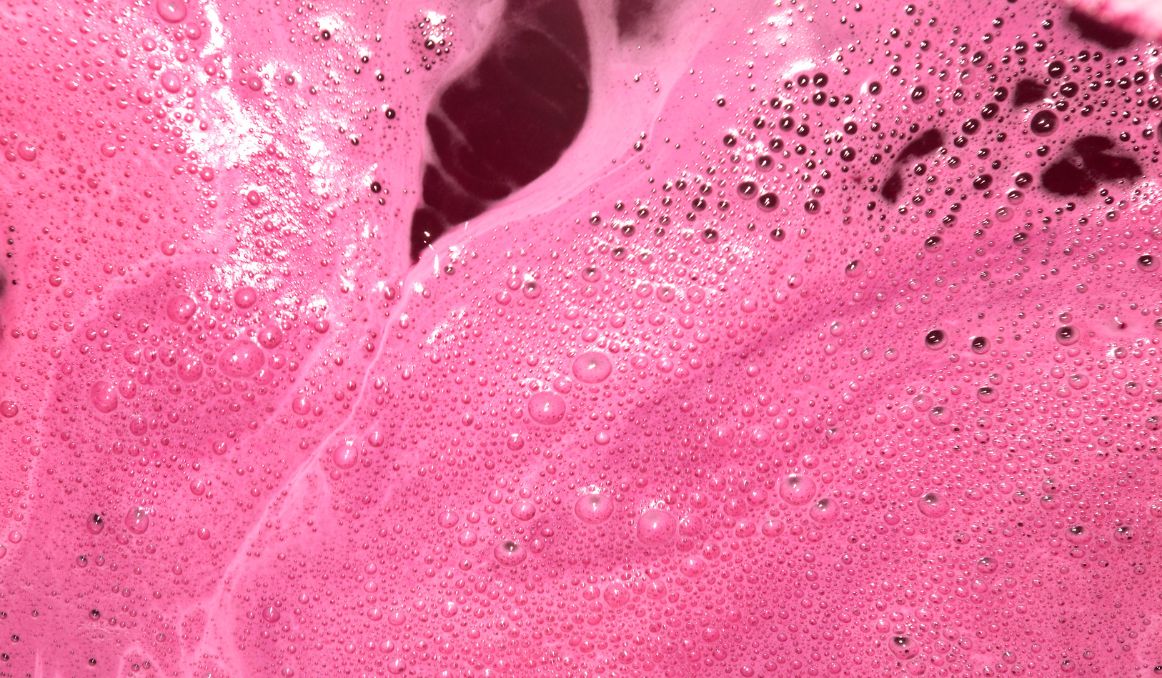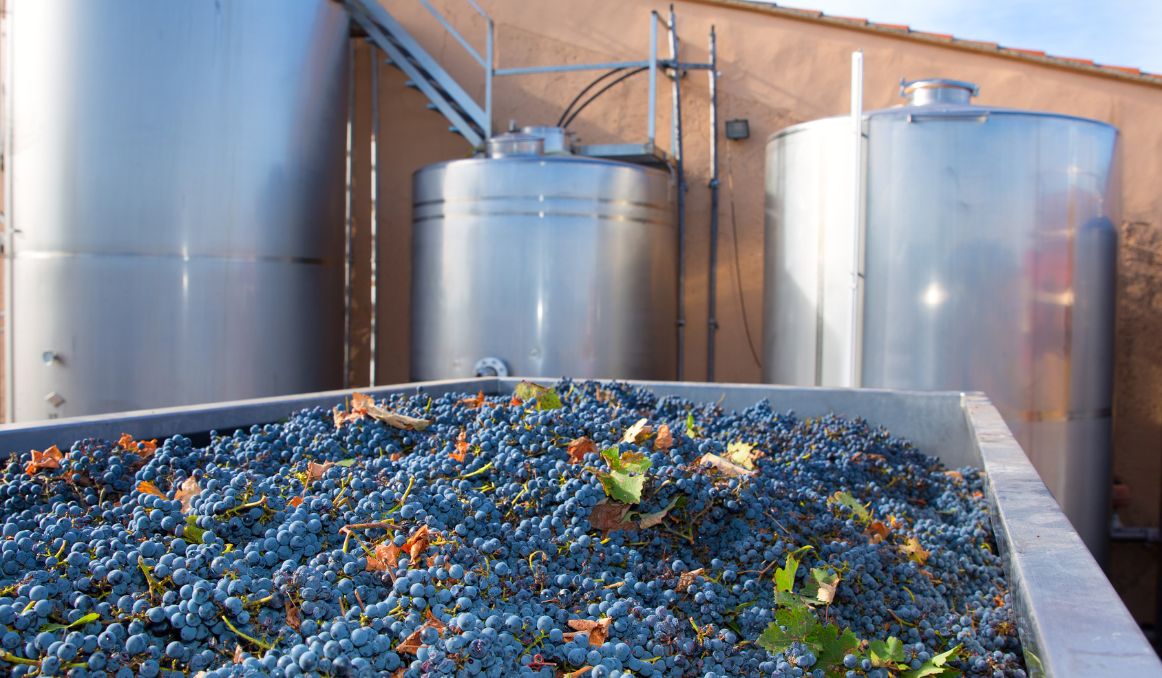Fermentation Formula for Wine
The fermentation formula for wine is a simple one with a fascinating backstory. The reality is that wine is more of a discovery than an invention. And although nature’s process certainly can be experimented with, there is not much, really, to be “improved upon.”
Wine truly is one of the most perfect examples of humans working with nature rather than against it.
The Basic Fermentation Formula for Wine

As you surely already know, to make wine, all you need is grapes and yeast. And in many circles, some would say honey or fruit and yeast as mead was the first alcoholic beverage to hit the human scene, perhaps 40,000 years ago, at least in records, and mead was considered the first wine, called “honey wine.”
Grapes, of course, were a secondary discovery.
But what exactly is it that yeast is doing?
Well, yeast is a single celled living organism that has been around for likely millions of years, as long as there have been natural sugar sources. Why sugar sources? Because yeast needs fermentable carbohydrates to survive and reproduce.
As long as yeast has access to starches, sugars, or fibers to consume, yeast cells can continue to take up space in moist, warm environments across the globe.
This consuming process is what we call alcoholic fermentation – the chemical breakdown of one substance into another.
In the case of wine, yeast consumes the natural sugars in grapes and produces alcohol, carbon dioxide, and hundreds of other secondary metabolites as waste and byproducts.
The chemical formula for this process is C6H12O6 –> 2C2H5OH + 2CO2 which represents the conversion of one molecule of glucose into two molecules each of ethanol and carbon dioxide.
Alternatively, the fermentation formula for wine (this time in words is):
Grape Juice + Yeast – Oxygen = Alcohol + Carbon Dioxide
Waste and Byproducts?
That’s right. The alcohol and carbon dioxide, and the other micronutrients expelled from yeast, are merely waste to the yeast cell itself. The purpose of consuming sugars for yeast is to get energy so it can survive and reproduce.
In fact, we call it fermentation for this reason. Fermentation always produces heat energy, from lactic acid fermentation performed by bacteria and even human cells when we need it to alcoholic fermentation performed by yeast.
In addition to alcohol and carbon dioxide, the fermentation formula in wine also produces:
- Esters, which are aromatic compounds that contribute fruity, citrusy, or floral aromas to wine.
- Tannins, an antioxidant polyphenol present in grape skins that are spread into wine, giving it dryness and astringency.
- Acetaldehyde, created by yeast on the pathway to the creation of alcohol; can enhance fruitiness.
- Anthocyanins, a reactive family of compounds in red grapes that give the wine its color and antioxidative properties.
- Sulfites, produced during fermentation to fend off competition from other microorganisms. Sulfites are part of what will kill off bad yeast or bacteria as well as any other toxin.
- Amino acids, which provide nitrogen for yeast to consume and construct proteins and amino acids to live and reproduce.
So, you see? The fermentation formula in wine is rich and complex even in its seeming simplicity.
The Origin of Wine
It is most likely the case that wine was discovered, in terms of grape wine at least, accidentally. It makes sense that a grape farmer had stored grapes in a container, which perhaps had crushed or extra ripe grapes at the bottom. Those grapes would have attracted local yeast, which would have gotten right to work fermenting.
By the time the farmer got to the bottom of the container, they would have discovered a juice with alcoholic properties.
A tasty juice with alcoholic properties, much like that honey wine so many in civilization had already discovered. Now they had a new form of wine, something to experiment with.
And indeed, they did. Honey wine began mixing with grape wine, and vice versa, and what began in Mesopotamia quickly travelled throughout the Middle East, into Europe, and across the globe.
From Discovery to Invention
What began as a discovery quickly became an invention, or a purposeful approach to making, sharing, and even marketing wine.
Growth and cultivation of grapes for wine dates back at least 8,000 years, and that is just what we have on record.
Since those days, winemakers have perfected a process that focuses specifically on local ingredients and elements in wine, including the soil, the local and wild yeast, and the combination and cultivation of the grapes themselves.
The 5 Steps of Winemaking Today

Today, the winemaking process is not that much different from those early times.
To make wine, there are 5 steps that must be followed:
The Harvest
Unlike many fruits, vegetables, and grains, great care is taken with grapes right down to the soil, or as vintners and sommeliers will call it, the terroir. Grapes are a delicate fruit that must be treated gently and grown with a great deal of attention in order to nurture the best possible flavor and aroma profiles in the wine.
Grapes are then selected at their ultimate ripeness for picking so they are full and rich with natural sugars.
Crushing and Pressing
The next step is to get the grapes straight into a mechanical crusher to get the juice out of the grapes. For white wine, grapes are then immediately pressed and all sediment is removed.
For red wine, skins, stems, and other sediment is allowed to sit for extra tannins to set.
Fermentation
The critical fermentation step is then followed, either allowing wild yeast to ferment the must or adding preferred wine yeast.
Clarification
Next, wine is racked, which removes all debris and sediment and gives the wine a chance to smooth out flavors.
Aging and Bottling
Finally, wine is either bottled or set aside for aging.
In the end, while the fermentation formula for wine is simple, making wine can be as simple or as complicated as you like, and the key to it all is the willingness to explore and experiment, using various ingredients and approaches.
Cheers!
Passionate about the wine and/or beer making process? So are we! If you’re interested in finding out how you can use our technology to control fermentation and monitor your yeast, save work hours and improve the cost-efficiency of your business, drop us a line at [email protected] or check out our product pages:
- Oculyze FW (Fermentation Wine) Yeast Cell Counter App + Hardware
- Oculyze BB 2.0 (Better Brewing) Yeast Cell Counter App + Hardware
Also, you can now get access to a fully functional demo account to test your yeast via our Web App. Completely free of charge and with no commitment to purchase.
Sources:


